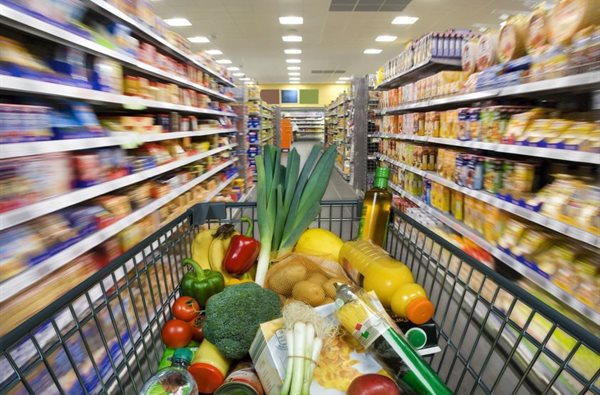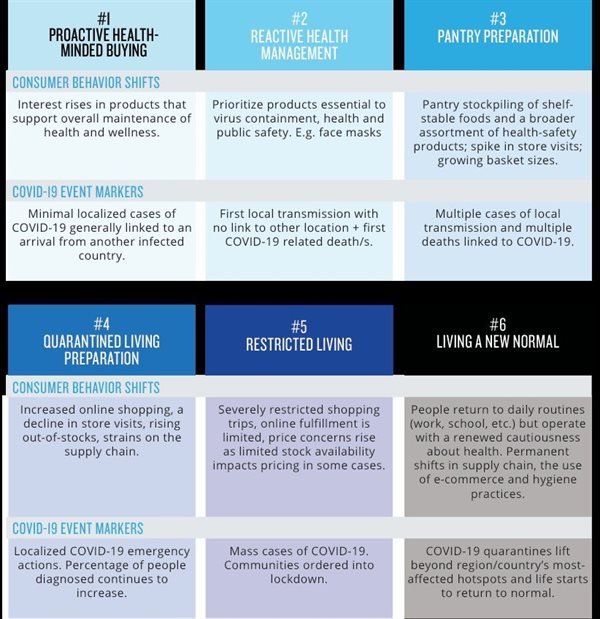
Top stories






More news


This insight stems from the identification of six key consumer behaviour threshold levels that tie directly to concerns around the novel coronavirus (Covid-19) outbreak. These thresholds offer signals of spending patterns, particularly for emergency pantry items and health supplies with these patterns being mirrored across multiple markets.
Nielsen’s Global Intelligence leader Scott McKenzie says the spending patterns identified across the various thresholds will be critical to understand as stores work to maintain supply levels of in-demand items.
“As patterns begin to emerge in response to news events of this nature, it will be imperative for companies to learn from these scenarios so they can sustain growth even in times where Covid-19 is deeply impacting people’s lives. These patterns will help provide leading and trailing indicators to those trying to understand how people will respond as developments continue to play out at different times in different countries,” says McKenzie.
When reviewed across impacted countries these patterns (though still evolving), provide a set of leading indicators for packaged goods manufacturers and retailers faced with supply issues as they race to meet record levels of demand and changing purchase habits.
Nielsen has therefore developed six threshold levels, based on these indicators across markets which are detailed below. Each one correlates with different levels of consumption, but there are some common timing elements, which are primarily driven by news cycles.

Threshold levels 1-4 show predictable signs of spending from consumers. In other words, depending on what stage any particular country is in, there are signs that spending occurs in a common way that may make it possible to predict what might happen next at a country level.
Overall, the world is largely past the first two stages of proactive health-minded buying that drove only minor changes to sales patterns.
As news reports detailed the continued and quick spread of the virus around the world, consumers in many countries jumped to threshold level 3: pantry preparations - where countries such as South Africa and Kenya currently are. By this stage, consumers begin developing stockpiles of food and emergency supplies. These spending spikes lessen in the weeks after panic buying but spiked on subsequent news events or developments.
In many countries, localised Covid-19 news developments have ignited consumer demand to the “pantry preparation” threshold. Reports of local transmission (and even deaths from Covid-19 in some markets) and government-enforced containment measures drive consumer interest toward necessities one might need at home in times of ongoing crisis. Some of the more affected markets, such as Italy and South Korea, are, however, well past the mid thresholds of “pantry preparations” and even “quarantined living prep”, moving onto the more advanced consumer thresholds of “restricted living”.
Looking ahead, learning from the purchase habits that were adopted in countries where consumers have progressed through the threshold levels, may help supply chain management in the countries entering the earlier threshold stages, particularly as governments enact more aggressive protocols as they learn more about the virus and its spread.
These public efforts also appear to shorten the time it takes for some countries to move through each threshold. As it stands, China is the only country with large levels of its population impacted to reach level 6 and begin returning to normal ways of living. After extended periods of isolation, many Chinese workers have returned to offices and factories, with the exception of areas hardest hit, such as Hubei province.
In the coming days, Nielsen will gain further visibility into how consumers behave during threshold levels 5 and 6. For example, Italy’s decision to lock down the country in a bid to stem a rising number of cases, for example, will be a key case study of how consumers react through the ‘quarantine living preparations’ and ‘restricted living’ thresholds.
McKenzie comments; “Similar to experiences in China, we anticipate difficulties in online order fulfilment and supply chain constraints affecting those both inside and outside Italy, as consumers contend with extended periods of isolation and lack of normal access to shops.
“The outbreak has already caused an array of changes in shopping behaviour and we’re focused on understanding the ones that will come next, how long they’ll last – and whether any will stay with us after the outbreak is behind us,” he adds.